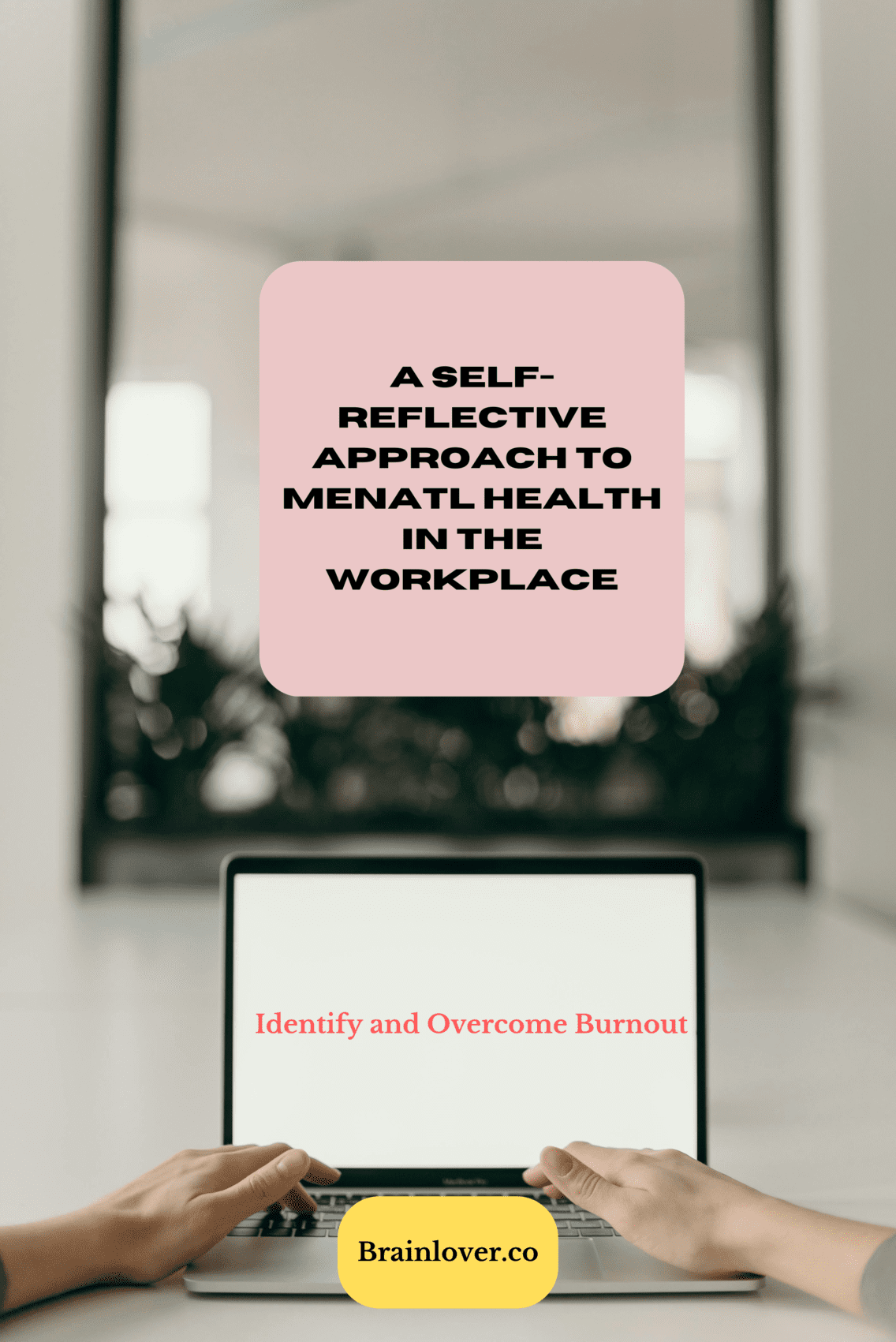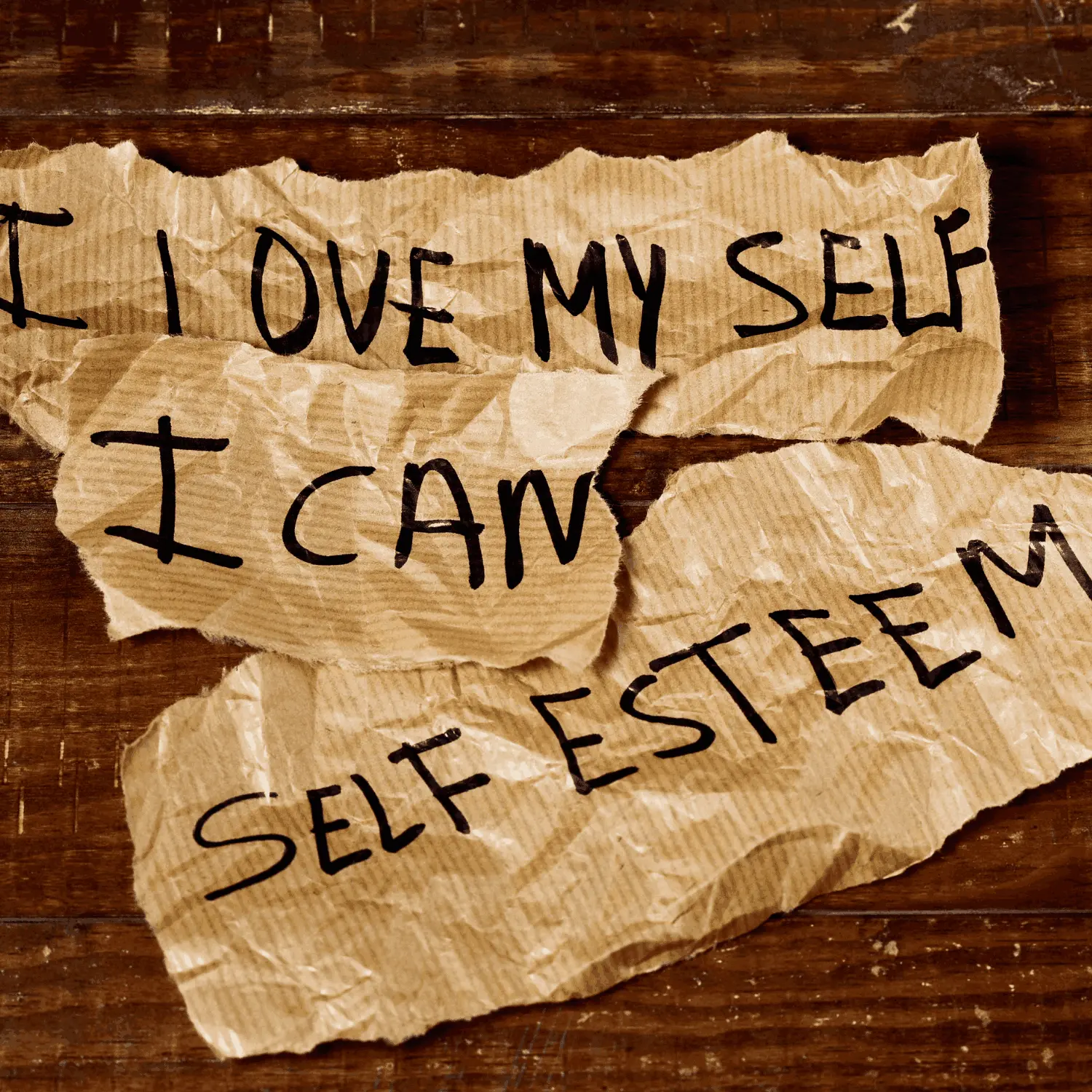A Self-Reflective Approach to Mental Health in the Workplace: Identifying and Overcoming Burnout

In today’s fast-paced and demanding work environments, mental health in the workplace has become a significant concern.
Many employees are experiencing high levels of stress and burnout, negatively impacting their overall well-being and productivity.
Addressing these issues and finding effective strategies to overcome burnout and foster a positive work environment is crucial.
Understanding the Nuances of Workplace Stress and Burnout

Grasping the subtle distinctions between workplace stress and burnout is crucial in nurturing your mental health amidst the whirlwind of professional demands.
While stress in the workplace is almost like a constant hum of pressure – deadlines to meet, projects to complete, and expectations to fulfill – burnout is the overwhelming silence that follows a prolonged cacophony of demands, leaving you feeling drained of energy, void of motivation, and often, disconnected from your professional aspirations and achievements.
Understanding these nuances is akin to recognizing that while the ocean’s surface may be tumultuous, its depths can be eerily still, yet both are parts of the same vast sea.
Stress, in manageable doses, can be a catalyst for growth and achievement, propelling you to navigate through challenges with determination.
However, when stress becomes unrelenting, it can lead you to burnout, where the sense of accomplishment has ebbed away, leaving a feeling of emptiness and exhaustion.
Recognizing this distinction is vital, for it empowers you to identify the symptoms and root causes of your feelings.
Are you facing a wave of stress that will eventually pass, or are you standing in the quiet aftermath of a storm, unsure how to find your footing again?
Acknowledging where you are on this spectrum is the first step towards seeking the appropriate remedy – setting healthier work boundaries, engaging in self-care practices, or reaching out for support.
Understanding these nuances enlightens your path to well-being and reinforces the importance of treating your mental health with the same attentiveness as your physical health in the workplace.
The Telltale Signs of Stress and Burnout in Your Life

In the journey of understanding and overcoming the challenges of workplace stress and burnout, recognizing their signs in your life is akin to noticing the subtle shift in the wind before a storm.
These symptoms often manifest quietly, almost whispering for attention amidst the daily hustle. You might find yourself engulfed in a sea of tasks yet feeling a profound disconnection from the work you once found fulfilling.
This emotional detachment can signal that burnout is taking root, gently nudging you to pause and reflect.
Physically, your body may send distress signals through relentless headaches, a restlessness that disrupts your sleep, or a constant state of fatigue no amount of rest can cure.
Emotionally, you could be riding a rollercoaster of irritability, finding yourself unusually short-tempered with colleagues or family over minor issues.
Mentally, it might seem like you’re perpetually cloaked in a fog, where concentration eludes you, and making decisions feels like navigating a labyrinth in the dark.
These symptoms are your body and mind’s plea for help, a call to action to alleviate them and address their underlying causes. Ignoring these signs can lead to a deeper entanglement in the web of stress and burnout.
However, by acknowledging their presence and understanding their implications, you embark on a path of self-care and recovery.
It’s a journey towards healing and rediscovering the joy and passion in your work, guided by the light of self-awareness and the strength of your resolve to prioritize your mental well-being.
Addressing the Stigma Around Mental Health in the Workplace

In the labyrinth of professional life, where every step seems to be scrutinized, it’s all too common for individuals to mask their struggles with mental health due to fear of judgment or misunderstanding.
This trepidation roots itself in the stigma that sadly still shadows discussions of mental well-being in many workplace cultures.
Breaking down these barriers requires a collective effort, a harmonious blend of empathy, understanding, and action that reshapes the narrative around mental health at work.
Encouraging open conversations about mental health is a fundamental step toward eradicating this stigma.
It’s about creating spaces where employees feel safe to express their vulnerabilities without the dread of being perceived as less capable or resilient.
Imagine a work environment where sharing struggles, asking for a mental health day, or admitting to feeling overwhelmed is met with support rather than skepticism.
This paradigm shift can be initiated through leadership by example, where managers and team leaders openly discuss mental health, setting a precedent of transparency and trust.
Moreover, educational initiatives play a pivotal role in dismantling misconceptions surrounding mental health issues.
Workshops, seminars, and resources illuminating the realities of mental health challenges can enlighten employees and employers, fostering a more inclusive and understanding workplace culture.
In essence, addressing the stigma around mental health in the workplace is about building bridges of empathy, educating with compassion, and nurturing an environment where everyone feels valued and understood beyond their professional output.
It’s a journey towards a more empathetic and supportive workplace, where mental health is not just a private struggle but a shared responsibility.
Simple Yet Effective Strategies for Managing Workplace Stress

In the tapestry of our professional lives, it’s all too easy to get entwined in the threads of continuous work without pausing to untangle ourselves from stress.
Adopting simple yet profound strategies can be a lifeline, drawing us back to a place of balance and serenity.
Begin by carving out clear boundaries between work and personal life; this acts as a protective barrier, safeguarding your peace amidst workplace demands.
It’s akin to setting an invisible fence that honors your need for rest and rejuvenation.
Dive into the healing waters of self-care, from indulging in a hobby that lights up your soul to ensuring you get enough sleep.
These acts of kindness towards yourself are potent stress diffusers, replenishing your energy and grit.
Regular physical activity is a cornerstone in this fortress against stress, fortifying both mind and body and making you less susceptible to the erosive effects of workplace pressures.
Additionally, fostering connections with colleagues can create a supportive network, transforming the workplace into a community rather than an arena of stress.
These relationships can provide a sounding board and offer different perspectives, and sometimes, just a listening ear can make all the difference.
Integrating these strategies into your daily routine will ward off burnout and pave the way for a more fulfilling and balanced professional journey.
Rekindling Your Passion for Work Through Self-Reflection and Growth
Embarking on a journey of self-reflection serves as a beacon, guiding you through the shadows of burnout back into the light of passion and purpose in your career.
It’s about peering into the depths of your heart and mind, uncovering the layers that have made you feel disconnected from the work that once ignited your spirit.
By asking yourself pivotal questions about your true aspirations, the impact you wish to make, and the alignment of your current path with your deepest values, you unlock the doors to personal and professional rejuvenation.
This process of introspection can reveal hidden treasures – perhaps a long-forgotten dream or a new direction that resonates with your core.
It’s an opportunity to reassess and realign your goals, making them more attuned to who you are and who you aspire to be.
Embracing growth, whether through acquiring new skills, seeking mentorship, or simply adopting a different perspective, breathes new life into your career journey.
It transforms the mundane into the extraordinary, not by changing what you do but by how you see and engage with your work.
Through self-reflection and a commitment to growth, you can fan the flames of your passion, illuminating your path with renewed energy and purpose.
Building Resilience and Cultivating a Positive Work Environment
Fostering resilience within ourselves and our workplaces is a bulwark against stress and burnout.
This strength isn’t inherent but cultivated through practices encouraging adaptability and a positive outlook, even in challenging circumstances.
A work environment that champions resilience is one where each voice is heard, teamwork isn’t just a buzzword but a lived experience, and the balance between professional demands and personal life is respected and encouraged.
This nurturing atmosphere allows employees to thrive as workers and individuals with diverse needs and aspirations.
It’s a garden where well-being and productivity bloom harmoniously, rooted in mutual respect and a collective commitment to mental health.
By weaving resilience into the fabric of our workplace cultures, we pave the way for a future where each of us can stand firm, no matter the challenges.
Q&A
How can employees balance their work demands with their personal lives to reduce the risk of burnout?
One possible solution is to practice self-care strategies such as regular breaks, engaging in physical activity, and ensuring enough sleep. Equally essential is for employees to assertively communicate their workload limits and use their designated leaves for relaxation and rejuvenation.
What role do company policies play in preventing or exacerbating workplace stress and burnout?
For instance, a company policy that encourages overtime without sufficient rest and recuperation could contribute to employee burnout. In contrast, policies promoting a healthy work-life balance could help prevent stress and fatigue.
Can workplace stress and burnout lead to physical health problems, such as heart disease or diabetes?
Indeed, research shows a significant correlation between prolonged workplace stress and chronic health conditions. Burnout can even compromise the immune system in extreme cases, leaving employees susceptible to various illnesses.
According to a study published in the Journal of Occupational and Environmental Medicine, the chronic stress accompanying burnout may even increase the risk of developing conditions such as coronary heart disease and high blood pressure (Yang et al., 2019). Thus, comprehensive interventions for reducing stress and preventing burnout can be considered critical for mental health and physical health.









